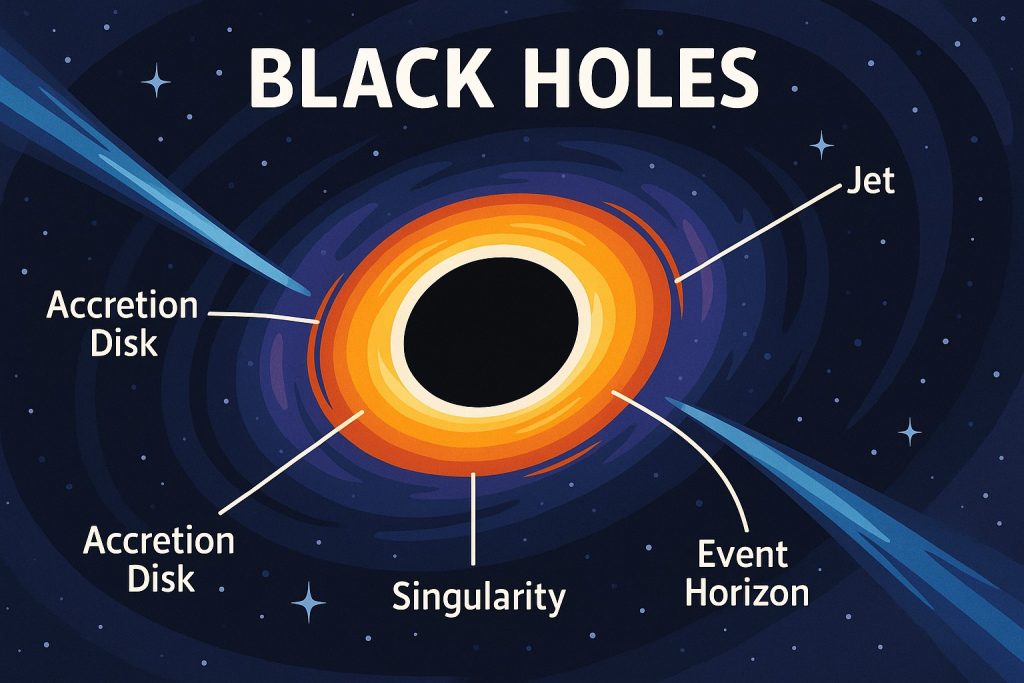Black holes are among the most fascinating and extreme objects in the universe. They are regions of space where gravity is so intense that nothing—not even light—can escape. Once thought to be purely theoretical, black holes are now known to be real, observable phenomena shaping galaxies and even bending the fabric of space-time itself.
What Is a Black Hole?
A black hole forms when a massive amount of matter is compressed into a very small space. This can happen through:
- The collapse of a massive star after it runs out of fuel (stellar black holes)
- The merging of smaller black holes
- Slow accumulation of matter at the center of galaxies (supermassive black holes)
At the center of a black hole is the singularity, a point of infinite density, where known physics breaks down.
Surrounding the singularity is the event horizon — the “point of no return.” Once something crosses this boundary, it cannot escape.
Types of Black Holes
- Stellar Black Holes
- Mass: 5–100 times that of the Sun
- Formed from dying massive stars
- Supermassive Black Holes
- Found at the centers of galaxies
- Millions to billions of solar masses
- Example: Sagittarius A* in the Milky Way
- Intermediate-Mass Black Holes
- Rare and hard to detect
- May form through mergers or clusters of stars
- Primordial Black Holes (Hypothetical)
- May have formed just after the Big Bang
- Possible candidates for dark matter
How Do We Observe Something That Can’t Be Seen?
Although black holes emit no light, scientists can detect their presence through:
- Gravitational effects on nearby stars and gas
- X-rays from hot material falling into the black hole (accretion disk)
- Gravitational waves from black hole mergers, detected by LIGO/Virgo
- Event Horizon Telescope (EHT) images of the black hole “shadow” in M87 and Sagittarius A*
These methods allow us to study black holes without seeing them directly.
What Happens Near a Black Hole?
- Spaghettification: Tidal forces near the event horizon stretch objects into long, thin shapes.
- Time dilation: Time slows dramatically near a black hole due to gravitational effects (as predicted by general relativity).
- Jet emission: Some black holes eject powerful jets of particles at near-light speeds.
Despite their destructive nature, black holes help regulate galaxy growth, recycle matter, and act as natural laboratories for testing the laws of physics.
Could Black Holes Be Gateways?
Some theories explore wormholes, or shortcuts through space-time, as possible byproducts of black holes. However, these ideas remain speculative. We don’t yet know what lies beyond the event horizon—or if information that falls in is lost forever.
Stephen Hawking’s work suggested black holes might slowly emit Hawking radiation, and eventually evaporate—but this is still theoretical.
Glossary
- Singularity — The central point in a black hole where density is infinite.
- Event horizon — The boundary around a black hole beyond which nothing can escape.
- Accretion disk — Hot matter spiraling into a black hole, emitting radiation.
- Gravitational waves — Ripples in space-time caused by massive cosmic events.
- Spaghettification — The stretching of matter due to intense tidal forces.


